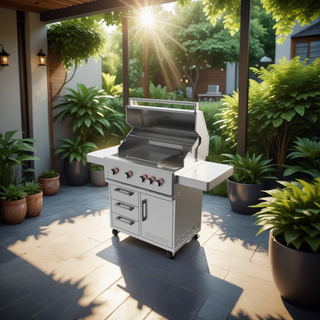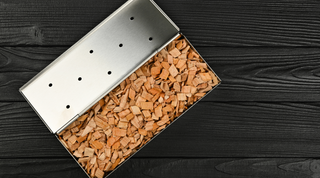When it comes to outdoor cooking, every subtle detail can make a difference—especially when trying to create that unforgettable, smoky taste profile. Wood chips are one of the most accessible and impactful ways to elevate your grilling experience. By introducing carefully chosen wood chips, you can infuse your meats, poultry, seafood, and even vegetables with complex flavors that go far beyond basic seasoning. In this extended guide, we’ll discuss selecting the perfect wood chips, how to incorporate them into different grills, common mistakes to avoid, and how to layer flavors like a seasoned pro.
Choosing Your Wood Chips: Understanding Flavor Profiles
Selecting the right wood chips is much like choosing a wine pairing for a fine meal: the right match enhances and elevates the entire dish. Consider these popular options:
-
Hickory: Bold, savory, and bacon-like—ideal for beef brisket, ribs, and pork shoulder.
-
Applewood: Lightly sweet and fruity, perfect for poultry, pork chops, and mild fish.
-
Cherry: Slightly sweet, subtle, and versatile, elevating poultry, ham, and even grilled vegetables.
-
Mesquite: Strong and earthy, this chip suits hearty cuts like steak or game meats.
-
Pecan: Mild and nutty, a great companion for chicken, pork, and seafood.
Pro Tip: Mix and match different wood chips to create custom blends that reflect your personal taste. Apple and hickory, for example, can add both sweetness and robust smokiness to your next cookout.
To Soak or Not to Soak? The Great Debate
Soaking wood chips in water, beer, or apple juice is a long-standing tradition. Some pitmasters soak their chips for 30 minutes to ensure they smolder rather than burst into flame. Others add chips dry for a more immediate, intense smoke. Experiment with both methods:
-
Soaked Chips: Longer, slower smoke release, ideal for longer cooks on a gas grill.
-
Dry Chips: Quick smoke infusion, great for shorter grilling sessions or charcoal setups.
Integrating Wood Smoke Into Different Grill Types
-
Gas Grills: Use a dedicated smoker box or wrap a handful of chips in foil, poking holes for smoke release. Place it over a burner set to medium heat until smoke emerges, then adjust as needed.
-
Charcoal Grills: Add dry chips directly to the coals or nestle soaked chips into the charcoal bed. Close the lid and watch as flavorful smoke envelopes your food.
-
Dedicated Smokers: Follow the manufacturer’s instructions for adding chips to the smoker tray or firebox. Low-and-slow cooking allows for maximum smoke absorption.
Pairing Wood With Your Protein
-
Beef & Game: Hickory, mesquite, or oak for a robust depth of flavor.
-
Pork & Poultry: Apple, cherry, or pecan chips highlight sweeter, mild undertones.
-
Seafood: Alder or applewood for subtle, clean smoke that doesn’t overpower delicate fillets.
Troubleshooting & Tips for Perfect Smoke
If your food tastes bitter, you may be overdoing the smoke. Aim for thin, bluish smoke rather than dense, white plumes. Keep the lid closed to trap flavor, and open sparingly to prevent the smoke from escaping.
Recommended Tools for Wood-Smoking Success
-
Smoker Box: Essential for gas grill owners, ensures controlled smoke release.
-
Long-Handled Tongs: For safely adding chips to hot charcoal.
-
Instant-Read Thermometer: Guarantees precise internal temperatures for perfectly cooked meats.
FAQs: Wood Chips on the Grill
Q: Can I reuse wood chips?
A: It’s best to use fresh chips each session for the most vibrant smoke flavor. Spent chips lose their potency.
Q: How long should I smoke my meat?
A: This depends on the protein. Ribs might smoke for several hours, while delicate fish may only need 20–30 minutes of smoke exposure. Experiment with timing to find your sweet spot.
Q: Are hardwood chips always better?
A: Hardwood chips (like hickory, oak, or maple) are more popular for grilling because they produce clean, flavorful smoke. Softwoods like pine or cedar should generally be avoided as they can impart off-flavors or even toxins.
Wood chips are a simple, cost-effective way to elevate your grilling game and add depth to every bite. By experimenting with chip varieties, soaking methods, and smoke integration techniques, you can create a unique flavor signature that sets your cooking apart. Embrace the art of smoke, and watch as your guests savor every mouthwatering morsel.




